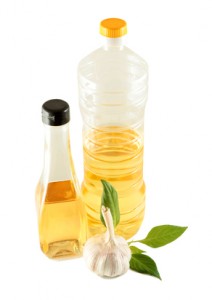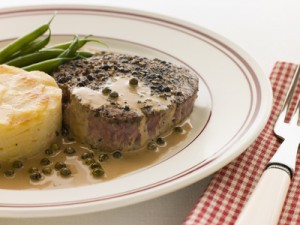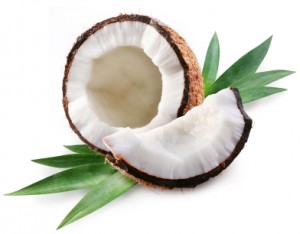People are still so polarized about fats.
While some people are still adamantly anti-fat, there is a ton research out there that shows that avoiding fat is not only very unhealthy, but it doesn’t help with weight loss or better cholesterol levels either.
IF you stay up to date with the latest nutrition news, you probably already know that certain fats are not only healthy for you, but they are absolutely ESSENTIAL for your good health!
We already know that saturated fats are extremely beneficial to our health—especially the saturated fat from coconut oil, fatty fish, grass-fed meats, whole milk, egg yolks, lard, and grass fed butter, right?
And, we know that monounsaturated fats like the fat in extra virgin olive oil is full of healthy and powerful antioxidants, along with the healthy fats from avocados and nuts.
Healthy fats, including saturated fats, polyunsaturated fats, monounsaturated fats, Omega 3’s and (to a lesser extent) Omega 6 and 9 fats, are essential for many important body and brain functions.
Here’s a few ways contribute to your good health:
- Fats, especially cholesterol, make up our cell walls, which helps the immune system, brain function, healing, rebuilding, cell respiration, energy production, and more.
- Saturated fats are necessary for lining the lungs which is necessary for ease of breathing.
- Fats are a necessary component of myelin, the fatty material that covers nerve cells and brain cells, and enables them to signal properly.
- The brain is made up of primarily fat. Omega 3 fats and saturated fats are actually necessary for proper function and repair of brain cells.
- Cholesterol is necessary for production of hormones testosterone, estrogen, progesterone, and other essential hormones in the body.
- Fat is important to help us feel satiated and helps maintain a stable blood sugar.
- Omega 3 fats and saturated fats are necessary to utilize calcium properly.
- Fat is converted to fuel, which is burned as an energy source, as long as you are not eating a diet high in sugar or starch.
- People who eat diets rich in natural fats like lard, butter and coconut oil, and omega 3 fats will smoother, younger looking skin than people who eat a diet high in vegetable oils.
Over the last several years, there’s been tons of research on the healing powers of individual nutritional compounds in foods, such as lycopene, vitamin D and essential fatty acids.
But, it has been found that certain nutrients work better together to create a bigger nutritional bang than when eaten alone. This is what we call, “food synergy”, and it’s one of the reasons why eating a wide variety of healthy foods can create far better health than eating a narrow selection of the same foods. Food synergy can help the prevention of many serious, chronic diseases including heart disease, cancer, diabetes and Alzheimer’s, to name just a few.
Food synergy is very important when it comes to absorbing vitamins and antioxidants.
Including a healthy form of fat with your meals is absolutely necessary to absorb the valuable nutrients from certain vitamins, minerals and antioxidants.
A recent study published in the American Journal of Clinical Nutrition shows that dietary fat is absolutely necessary for the proper absorption of nutrients from fruits and vegetables. In this particular scientific study, one group ate a salad consisting of spinach, lettuce, tomatoes, and carrots with fat-free dressing and another group ate the salad with a dressing that contained fat. Those who ate the salad with fat absorbed far more of the beneficial phytonutrients from the vegetables in the salad.
Similar studies from Ohio State University and Iowa State University also found the same results: Adding healthy fats like nuts, extra-virgin olive oil, whole eggs, organic cheese, or avocado to your salad bowl can increase the amount and absorption of beneficial antioxidants, such as the lutein in the leafy greens, lycopene in tomatoes and red peppers, and beta-carotene in carrots — your body absorbs.
And, in fact, a 2008 Journal of Nutrition study reported that those who ate more alpha- and beta-carotenes, the compounds in bright yellow, orange or red colored fruits and vegetables, had about a 20% lower risk of dying from heart disease over a 15-year period.
Many of these antioxidants and vitamins, require fat to be absorbed and put to use in the body. This is especially true for the fat-soluble vitamins A, D, E and K2, as well as the antioxidants lutein, lycopene and beta-carotene.
How does this work? When fats are eaten, the body responds by squirting bile (a digestive enzyme made in the liver), into the small intestine. Bile breaks up the fat into tiny globules called micelles that transfer their contents to the intestinal wall, where the nutrients are absorbed and sent into the bloodstream.
NO FAT ==> no bile secretion ==> no carotenoid absorption.
Many fats themselves are rich sources of nutrients. For example, one of the best sources of vitamin E, a potent antioxidant, is red palm oil. Choline from egg yolks is an important nutrient for liver function. Cod liver oil is a great source for both vitamins A and D. And whole milk and butter from grass fed cows is rich in vitamin K2, necessary to prevent osteoporosis.
Many of the super powered, antioxidant spices also require healthy fats to maximize their super powerful nutrients as well. Turmeric, cinnamon and ginger are some of those super powered spices that work best with some fat. For example, in order for the curcumin from turmeric to appear in the blood in large enough amounts to have beneficial effects on your health, it must be combined with a fat like olive oil, coconut oil, butter, whole milk, or cheese for optimum effect.
Here’s a really good example of what happens to some of vital nutrients if not eaten with some fat so they are absorbed properly. This actually happened to a good friend of mine a few years ago.
A while back when the low-fat craze was all the rage, my good friend, who was into bodybuilding and also a vegetarian, got too carried away with eating a low fat diet. She started avoiding ALL fats thinking they would make her gain too much body fat. Well, obviously she was not able to absorb a lot of necessary nutrients since she wasn’t eating any fat, but it was especially noticeable with vitamin A. She was constantsly craving and eating a lot of fruits and vegetables that contained beta-carotene, which is converted to vitamin A in our bodies—as long as it’s eaten with some fat.
Well, of course she wasn’t eating any fat, so the beta-carotene had nowhere to go and her body couldn’t use it. She ate so much of these beta-carotene rich foods, that her skin actually started turning very orange!
In the absence of fat in her diet, her body could not do a thing with all that beta-carotene except to store it in her tissues. Needless to say, she became extremely deficient in a lot of vital nutrients that required fat, and she started having serious health issues because of this.
Once she finally went back to eating healthy fats, her body was able to absorb and uiltize the nutrients she was eating and her health came back, and her skin went back to being a normal color instead of orange.
Guess what the first thing she ate was? Organic, grass fed beef liver! Liver just so happens to one of the most potent sources of vitamin A, and it is also full of healthy cholesterol that is necessary to properly utilize the vitamin A. So, you see, my friend was in dire need of vitamin A, (and cholesterol too) which she could not absorb with her fat-free diet!
While fat is necessary for good nutrition, the type of fat you eat matters. A lot.
When consuming dietary fat to improve your health, there are some important rules to follow:
- Avoid unhealthy fats, especially trans fats and hydrogenated fats. Plant fats are fine but stick to unprocessed fats like avocado, coconut, nuts and seeds—NOT vegetable oils, that are highly processed and inflammatory.
- You don’t need to overdo it — you only need a small amount of fat to facilitate vitamin absorption.
One of the best fats to help you utilize nutrients best is coconut oil.
A brand new study recently compared the effects of coconut oil to safflower oil on the absorption of carotenoids from tomatoes. The coconut oil actually enhanced the uptake of the tomato carotenoids to a much greater degree than the safflower oil. This may be because of the fact that coconut oil is made of medium chain fatty acids (MCFAs) and is a saturated fat.
In short, most every meal or snack that you consume should contain some healthy fats, even if only in small portions. I even put coconut oil or grass-fed butter in my organic coffee in the morning, along with a touch of cinnamon—which, I’m certain, helps me absorb some of the healthy phytochemicials and antioxidant properties of the coffee and cinnamon. Yes, organic coffee has antioxidants in it too!
So, include a little coconut oil in your smoothie, add some grass fed butter to your cooked veggies, throw in some sliced avocado and a drizzle of olive oil on your salad. Drink whole milk instead of skim (better yet, drink whole, RAW, unpasteurized milk). Dip your apple slices or banana in some natural peanut butter; grab a handful of nuts to munch with your blueberries, and AVOID all those ‘low fat’ versions of foods you see that are advertised to be more healthy!
Ok, I’m off to enjoy my grain-free, Paleo, organic pumpkin pancakes (high in beta-carotene) slathered in grass-fed butter and a little maple syrup. Mmmm. Can’t wait!
References:
Brown, et al, “Carotenoid bioavailability is higher from salads ingested with full-fat than with fat-reduced salad dressings as measured with electrochemical detection,” American Journal of Clinical Nutrition, 2004.80(2):396-403
Kadey, Matthew, “Better Together”, Experiencelife.com, May 2010.
Mercola, Joseph. “Which Oil Will Help You Absorb Nutrients Better?”, Mercola.com, August 20, 2012.
Ribaya-Mercado JD. Influence of dietary fat on beta-carotene absorption and bioconversion into vitamin A. Nutr Rev. 2002 Apr;60(4):104-10.
Traber MG. The bioavailability bugaboo. Am J Clin Nutr. 2000 May;71(5):1029-30.
Tyssandier V, Reboul E, Dumas JF, Bouteloup-Demange C, Armand M, Marcand J, Sallas M, Borel P. Processing of vegetable-borne carotenoids in the human stomach and duodenum. Am J Physiol Gastrointest Liver Physiol. 2003 Jun;284(6):G913-23.
van Het Hof KH, West CE, Weststrate JA, Hautvast JG. Dietary factors that affect the bioavailability of carotenoids. J Nutr. 2000 Mar;130(3):503-6.
Preorder your copy of the The Flat Belly Kitchen book on Amazon!
Books will be available December 2 Order yours now!
 Catherine (Cat) Ebeling RN BSN, is a back to basics diet and nutrition specialist. In addition to her advanced degree in nursing from a major medical school, she has spent the last 30 years intensely studying diet, health and nutrition. She also has a book titled “The Fat Burning Kitchen, Your 24 Hour Diet Transformation” that has sold over 60,000 copies worldwide, and has helped thousands of people transform their lives, lose weight and improve their health.
Catherine (Cat) Ebeling RN BSN, is a back to basics diet and nutrition specialist. In addition to her advanced degree in nursing from a major medical school, she has spent the last 30 years intensely studying diet, health and nutrition. She also has a book titled “The Fat Burning Kitchen, Your 24 Hour Diet Transformation” that has sold over 60,000 copies worldwide, and has helped thousands of people transform their lives, lose weight and improve their health.
Her mission is to help others prevent disease and live their best life ever.
Nutrition made Easy. Simple.Smart.Nutrition.














